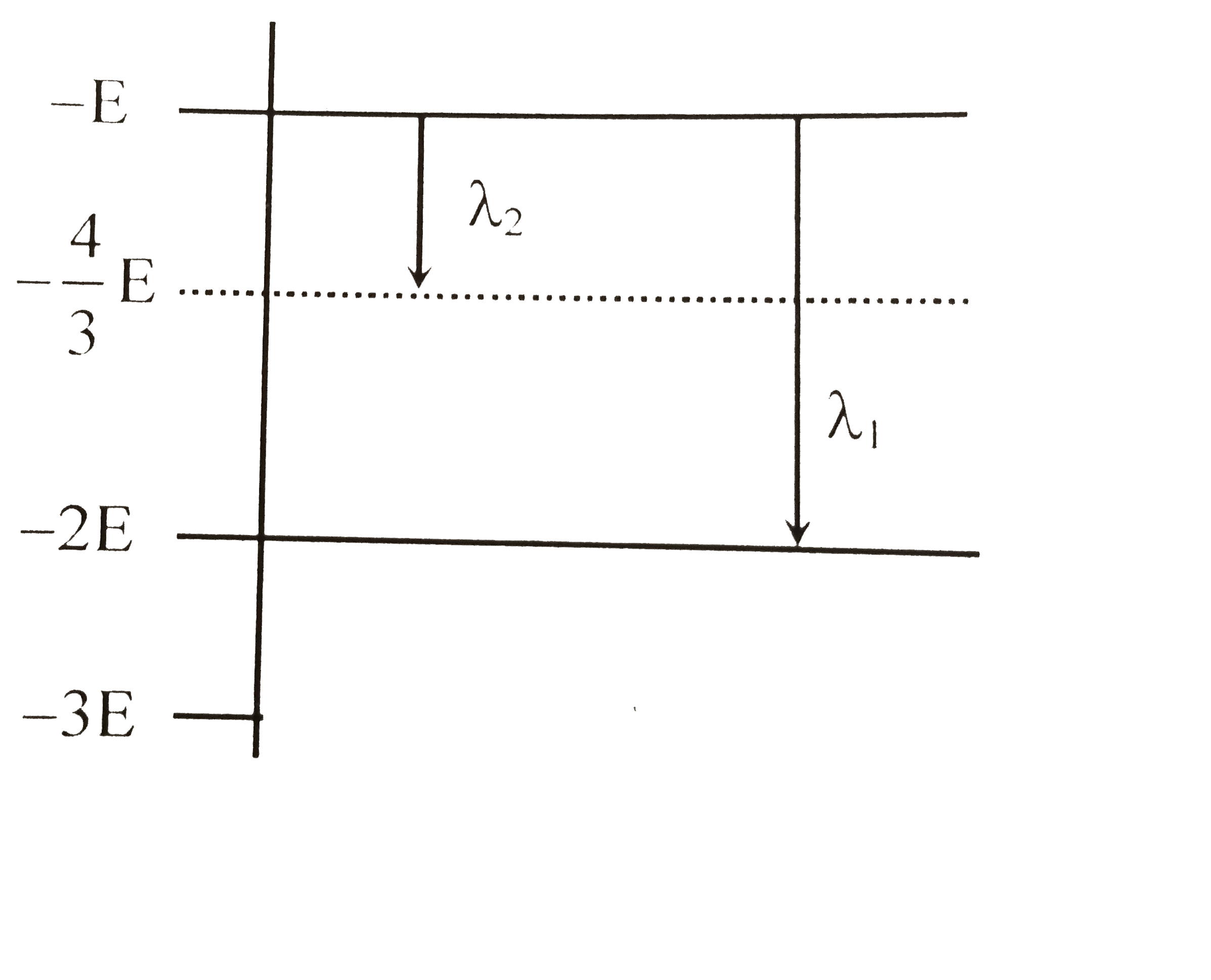Neglecting the mass variation with velocity , the ratio of the wavelength (λeλp) associated with an electron (λe) having a kinetic energy E and wavelength associated with a Photon (λp) having kinetie energy 4E is
2:1
1:2
4:1
1:4
The correct Answer is:A
To solve the problem, we need to find the ratio of the wavelengths associated with an electron and a photon, given their kinetic energies.
1. Understanding the Wavelengths:
- The wavelength associated with a particle can be calculated using the de Broglie wavelength formula for the electron:
λe=hpe
where pe is the momentum of the electron.
- For a photon, the wavelength is given by:
λp=hpp
where pp is the momentum of the photon.
2. Relating Kinetic Energy to Momentum:
- The kinetic energy E of the electron is given by:
E=p2e2m
Rearranging gives:
pe=√2mE
- For the photon, the kinetic energy is related to its momentum by:
E = pc \quad \text{(where c is the speed of light)}
Thus, the momentum of the photon is:
pp=Ec
3. Substituting for Wavelengths:
- Substitute the expressions for momentum into the wavelength formulas:
λe=h√2mE
λp=h4Ec=hc4E
4. Finding the Ratio:
- Now, we can find the ratio of the wavelengths:
λeλp=h√2mEhc4E=4E√2mE⋅c
- Simplifying this gives:
λeλp=4√E√2m⋅c
5. Substituting Kinetic Energies:
- Since the kinetic energy of the photon is 4E, we can substitute to find the ratio:
λeλp=2
Final Answer:
Thus, the ratio of the wavelength associated with the electron to the wavelength associated with the photon is:
λeλp=2:1
- The wavelength associated with a particle can be calculated using the de Broglie wavelength formula for the electron:
λe=hpe
where pe is the momentum of the electron.
- For a photon, the wavelength is given by:
λp=hpp
where pp is the momentum of the photon.
- The kinetic energy E of the electron is given by:
E=p2e2m
Rearranging gives:
pe=√2mE
- For the photon, the kinetic energy is related to its momentum by:
E = pc \quad \text{(where c is the speed of light)}
Thus, the momentum of the photon is:
pp=Ec
- Substitute the expressions for momentum into the wavelength formulas:
λe=h√2mE
λp=h4Ec=hc4E
- Now, we can find the ratio of the wavelengths:
λeλp=h√2mEhc4E=4E√2mE⋅c
- Simplifying this gives:
λeλp=4√E√2m⋅c
- Since the kinetic energy of the photon is 4E, we can substitute to find the ratio:
λeλp=2
Thus, the ratio of the wavelength associated with the electron to the wavelength associated with the photon is:
λeλp=2:1
Topper's Solved these Questions
- DUAL NATURE OF RADIATION AND MATTER BOOK - MODERN PUBLICATIONCHAPTER - DUAL NATURE OF RADIATION AND MATTER EXERCISE - COMPETITION FILE (OBJECTIVE TYPE QUESTIONS ( B - Multiple Choice Questions) (AIPMT/NEET & Other State Boards for Medical Entrance))
26 Videos
- DUAL NATURE OF RADIATION AND MATTER BOOK - MODERN PUBLICATIONCHAPTER - DUAL NATURE OF RADIATION AND MATTER EXERCISE - COMPETITION FILE (OBJECTIVE TYPE QUESTIONS ( B - Multiple Choice Questions) (JEE (Main) & Other State Boards for Engineering entrance))
18 Videos
- DUAL NATURE OF RADIATION AND MATTER BOOK - MODERN PUBLICATIONCHAPTER - DUAL NATURE OF RADIATION AND MATTER EXERCISE - Revision Exercises (Numerical Problems)
20 Videos
- CURRENT ELECTRICITYBOOK - MODERN PUBLICATIONCHAPTER - CURRENT ELECTRICITYEXERCISE - Chapter Practice Test
15 Videos
- ELECTRIC CHARGES AND FIELDS BOOK - MODERN PUBLICATIONCHAPTER - ELECTRIC CHARGES AND FIELDS EXERCISE - Chapter Practice Test
15 Videos
Similar Questions
Knowledge Check
The de - Broglie wavelength λ associated with an electron having kinetic energy E is given by the expression
Ah√2mEB2hmEC2mhED2√2mEhNeglecting veriation of mass with velocity , the wavelength associated with an electron having a kinetic energy E is proportional to
AE1/2BECE−1/2DE−1/2According to de-Broglie hypothesis, the wavelength associated with moving electron of mass 'm' is 'λe'. Using mass energy relation and Planck's quantum theory, the wavelength associated with photon is 'λp'. If the energy (E) of electron and photonm is same, then relation between λe and 'λp' is
Aλp∝λeBλp∝λ2eCλp∝√λpDλp∝1λe
The ratio of the wavelengths of a photon and that of an electron of same energy E will be [m is mass of electron ]
View SolutionThe wavelength λe of ann electron and λp of a photon of same energy E are related by
View SolutionThe energy of a photon of wavelength λ is given by
View SolutionAn electron of mass m and a photon have same energy E. The ratio of de - Broglie wavelengths associated with them is :
View SolutionAn electron of mass m and a photon have same energy E. The ratio of de - Broglie wavelengths associated with them is :
View Solution

